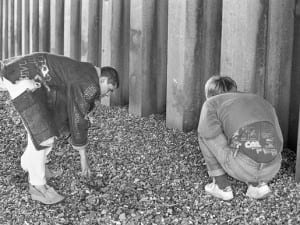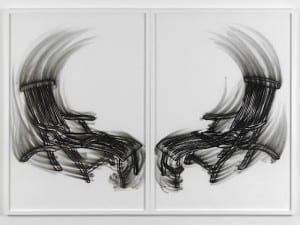In the catalogue prepared for the first ever Contemporary African Art Fair to take place in the world, the foreword by Koyo Kouoh, the fair’s Cameroon-born artistic director, draws attention to many important aspects of the fair. However, one of the most crucial points she makes is as follows: “The global reception of African art has morphed from the shadows of dusk into the splendour of rose in the course of a decade.” Just as it has been with Middle Eastern art in the last decade, African art has also been on the global artistic agenda. Bringing together 54 African countries under one roof, as well as 70 emerging and established artists, the fair comprises of 15 exhibitors from Abidjan to Lagos. The variety of art produced across African countries; sculptures, photography, paintings, installations, mixed-media pieces of completely different artistic movements all reflect the richness of Africa’s history and geography as well as the contemporary cultural abundance inherent within the infrastructure of the continent.
There are many striking works in the fair and even though the art displayed is intrinsically African the European influences in established African artists’ works such as Richard Butler-Bowden (1957), Solly Cissé (1969), Amahiguéré Dolo (1955), Meschac Gaba (1961), Ablade Glover (1934), Rachid Koraïchi (1947) and Ernest Mancoba (1904-2002) shine through in their techniques and subject matters. Africa’s history of European oppression and exploitation is hidden under all the works at the fair. This separation between African artists who have either lived or travelled to European countries throughout their working lives and the bitter past history of this vast continent is what renders the artistic production of both older and younger artists absolutely crucial to the social dynamics of the contemporary age as an overwhelming sense of wisdom emanates from even the youngest artists included in the fair.
Some of the younger artists who immediately get our attention are Fabrice Monteiro (1972), Sammy Baloji (1978), Aboudia (1983), Wycliffe Mundopa (1987) and Terence Musekiwa (1990). Such artists really succeed in bringing together the old with the new, and exceeding the borders of what was and is known as African art across the globe. On the other hand, examples of African artists from the younger generation collaborating can also be seen. For instance, the striking results of two Kenyan artists’ works, namely those of James Muriki and Miriam Syowia Kyambi’s joint residency at the KEMRI-Wellcome Trust Research Programme organised as part of the Art in Global Health project in 2012 are truly second to none as they explore the intricate layers of photographic media and multi-media techniques focusing on history, the differences between Western and traditional African medicine, colonialism and sexuality as well as the extremely intriguing contemporary social landscape of Africa.
Another highly-significant aspect of this invigorating fair is that not only does it bring together emerging artists with those more established but it also showcases an array of male and female artists’ works with a balanced approach. While in most art fairs around the world, the number of male artists exhibited surpasses that of female artists, it is pleasantly surprising to see such unity and equality. Once upon a time the Middle East was seen as the melting pot of civilisations, art and traditions. Today, one might go as far as to say that with this most recent surge in African art, Africa might become the new ‘pot’ for immaculate artistic production and a developing industry in which more and more artists will be able to make names for themselves. The number of Western galleries from London, Paris and Seattle representing African artists at the fair is evidence of this. It wouldn’t be misleading to say that they are within their rights and have the good taste for art to invest their time and resources on such fresh, creative and brilliant artists who in time will be remembered as the great masters of African art.
Hande Eagle
1:54 Contemporary African Art Fair, 16–20 October, West Wing Galleries, Somerset House, London, WC2R 1LA. www.somersethouse.org.uk
Image Uche James-Iroha, Rolls Royce I, 2013. Courtesy the gallery.





